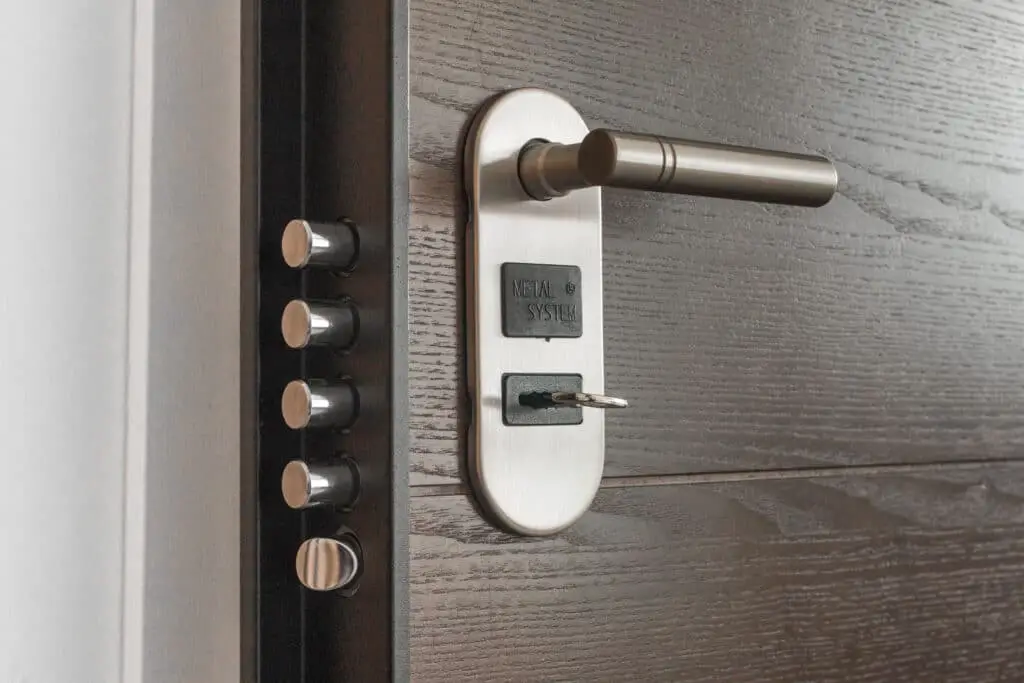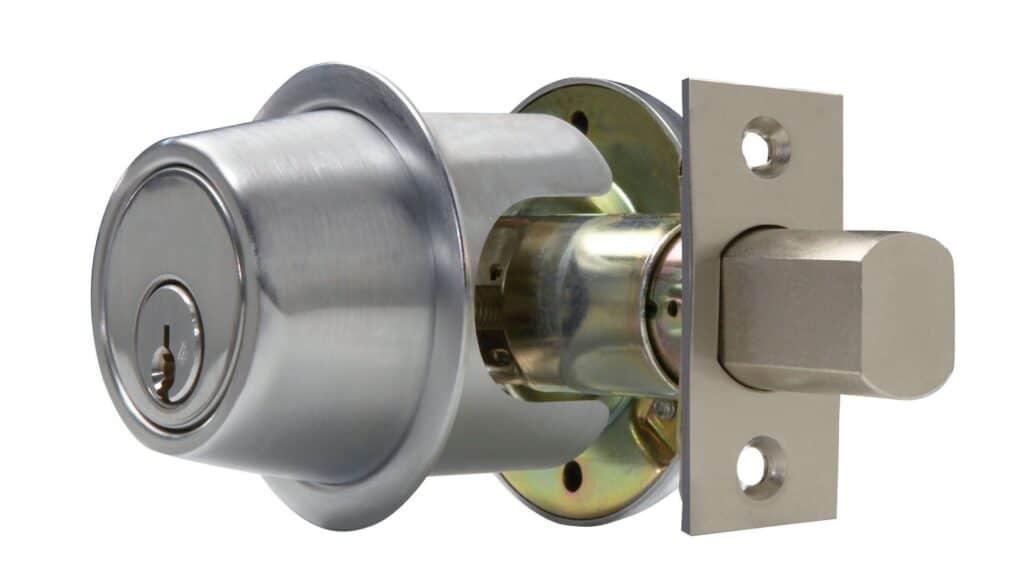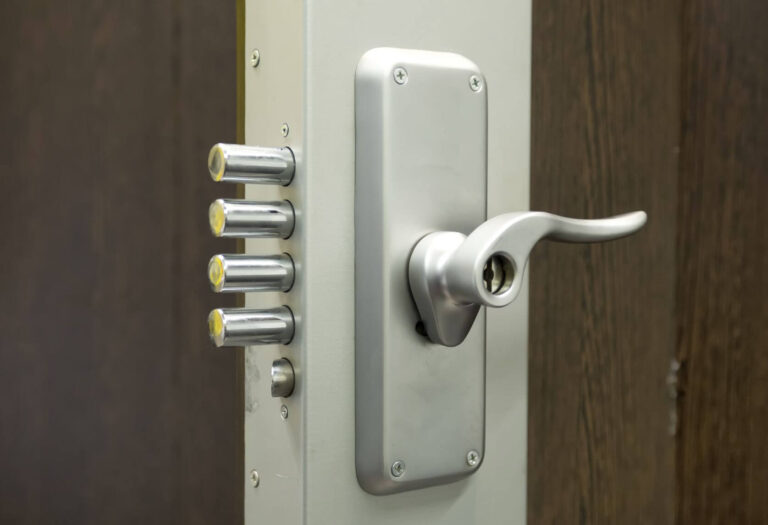Introduction
How To Pick A Deadbolt Lock With Bobby Pins: Lock picking is a skill that has fascinated people for centuries. Whether it’s out of curiosity or necessity, learning how to pick a deadbolt lock can be a valuable skill to have. In this article, we will explore the art of lock picking using a common household item – bobby pins. With a little practice and patience, you can become adept at picking deadbolt locks and gain a deeper understanding of the mechanisms that keep our homes secure.
Lock picking is often associated with criminal activity, but it’s important to note that the information provided here is intended for educational purposes only. It is illegal to pick locks that you do not own or have permission to access. Always use this knowledge responsibly and ethically.
Before we delve into the techniques of lock picking, it’s essential to understand the basics of how a deadbolt lock works. A deadbolt lock is a type of lock that can only be opened with a key or by manipulating its internal mechanisms. It consists of a bolt that extends into the door frame, preventing the door from being opened without the correct key or combination.
Lock Picking
Lock picking is a delicate process that requires finesse and precision. Turning the lock and aligning the pins within the cylinder with the shear line retracts the bolt. Bobby pins can be used to open locks since they are small and flexible.
Bobby pin deadbolt lock picking is difficult, but with experience, it can be useful. Lock picking should only be used legally and ethically, like accidentally locking yourself out of your home. After grasping the concept, let’s walk through picking a deadbolt lock with bobby pins.

Can a deadbolt lock be picked?
A deadbolt lock is a type of lock that provides an extra layer of security for residential and commercial properties. It’s meant to resist attack and keep intruders out. Deadbolt locks are secure, but determined criminals with the correct tools can pick them.
Firstly, it is important to understand that picking a deadbolt lock requires a certain level of expertise and knowledge. It is not a simple task that can be accomplished by just anyone. Skilled locksmiths or experienced burglars are the ones who possess the necessary skills to pick a deadbolt lock.
Deadbolts can be picked with tension wrenches and picks. These tools can manipulate a lock’s pins and tumblers to unlock it without a key.
However, it is important to note that not all deadbolt locks are easily picked. High-quality deadbolt locks, especially those that meet industry standards and have additional security features, are more resistant to picking attempts.
Manufacturers have developed advanced technologies and mechanisms to enhance the security of deadbolt locks. Anti-pick or mushroom pins on various deadbolts make it harder for lock pickers to move the internal components. Additionally, some deadbolts have hardened steel inserts or reinforced strike plates to prevent forced entry.
How many pins are in a deadbolt?
A deadbolt is a type of lock that provides enhanced security for doors. It is commonly used in residential and commercial buildings to prevent unauthorized access. One of the key components of a deadbolt lock is the pins. These pins play a crucial role in ensuring the lock’s effectiveness and resistance to tampering. This article discusses deadbolt locks’ pin count and security.
The Importance of Pins in a Deadbolt:
Deadbolts are superior to spring-bolt locks in terms of security. Deadbolt pins inhibit picking. These hardened steel pins delicately open locks.
When a key is inserted into the lock, it pushes the pins to specific heights. Aligning them with the shear line. This alignment allows the lock cylinder to rotate freely, unlocking the door. The number of pins in a deadbolt lock can vary, but most commonly, they range from five to seven.
The Impact of Pin Quantity on Security:
The number of pins in a deadbolt lock directly affects its security level. Generally, the more pins a lock has, the more difficult it is to pick or bypass. A deadbolt with a higher number of pins provides additional combinations. Making it more challenging for an intruder to guess the correct alignment.
However, deadbolt lock security is not primarily based on pin count. Its efficiency also depends on the lock mechanism, strike plate, and installation procedure.
How strong is a deadbolt lock?
Doors are more secure with deadbolt locks. Residential and commercial structures employ it to resist forceful entry. Deadbolt locks are strong and durable, deterring burglaries and unwanted entry.
Paragraph 1:
Deadbolt locks are among the most secure. Deadbolt locks resist picking and manipulation better than spring bolt locks. Their design makes them unique. When locked, a strong metal bolt extends into the door frame. Hardened steel bolts are tough to break.
Paragraph 2:
One of the key factors that determine the strength of a deadbolt lock is its length. Longer bolts provide greater security as they penetrate deeper into the door frame. Making it harder for intruders to pry the door open. Deadbolt locks are available in various lengths, ranging from standard 1-inch bolts to longer 2 or 3-inch bolts. It is recommended to choose a deadbolt lock with a longer bolt for enhanced security.
Paragraph 3:
In addition to the length of the bolt, the material used in the construction of the deadbolt lock also plays a crucial role in its strength. High-quality deadbolt locks are typically made of solid brass or steel, which offer superior durability and resistance to tampering. These materials are less prone to corrosion and can withstand significant force, making them ideal for securing doors.
Paragraph 4:
The deadbolt lock’s striking plate is another critical component to its overall security. Door striking plates are metal plates affixed to the door frame. When locked, the bolt enters. Installing a strong strike plate in the right place can considerably increase building safety. Locking the door with a deadbolt prevents intruders from kicking in the door or forcing it open.
Paragraph 5:
Deadbolt locks, in general, are incredibly sturdy and should be a part of any good security setup. When properly installed and maintained, they provide a reliable barrier against unauthorized access and intrusions. It is important to choose a high-quality deadbolt lock, considering factors such as bolt length, material, and strike plate strength, to ensure maximum security for your doors.
Can you key a deadbolt?
When it comes to home security, deadbolts are an essential component. They provide an extra layer of protection by making it more difficult for unauthorized individuals to gain access to your property. However, a common question that arises is whether it is possible to key a deadbolt. In this article, we will explore the concept of keying a deadbolt and discuss the factors that determine its feasibility.
Understanding Deadbolts:
Before delving into the possibility of keying a deadbolt, it is important to understand what a deadbolt is. A deadbolt is a lock that may be opened with either a key or a thumbturn. It is more secure than standard spring bolt locks and is therefore more common on external doors. Deadbolts are an essential component of any home security system due to their ability to withstand attempted forced entries.
The Keying Process:
Keying a deadbolt refers to the process of creating a key that can operate the lock. This process involves matching the internal components of the lock to a specific key pattern. Deadbolts can be keyed alike or differently, thus each lock needs a unique key. Professional locksmiths have the tools and knowledge to match locks and keys.
Feasibility of Keying a Deadbolt:
There are a number of variables that determine whether or not a lock can be keyed. It’s crucial to think about the type of lock you have, for example. It is possible to change the key configuration of some deadbolts with little effort. Unfortunately, not all deadbolts come equipped with this capability, so you might have to replace the lock entirely if you ever need to change the keys.
Can a burglar open a deadbolt lock?
Deadbolts can be keyed alike or differently, thus each lock needs a unique key. Professional locksmiths have the tools and knowledge to match locks and keys.
Factors Affecting a Burglar’s Ability to Open a Deadbolt Lock:
Several factors come into play when determining whether a burglar can open a deadbolt lock. Firstly, the quality and type of deadbolt lock used can significantly impact its resistance to tampering. High-quality deadbolt locks with reinforced strike plates and longer bolts are generally more difficult to pick or force open.
Additionally, the skill and experience of the burglar play a crucial role. Professional burglars who expertise in lock picking may be more likely to open a deadbolt lock than amateurs. However, most criminals favor easier targets and will likely leave a well-secured residence.
Methods Used by Burglars to Open Deadbolt Locks:
Burglars employ various methods to bypass deadbolt locks. One common technique is lock picking, where the burglar uses specialized tools to manipulate the lock’s pins and tumblers. This method requires skill and patience, making it less likely for an opportunistic burglar to use.
Another method is brute force, where the burglar attempts to kick or force the door open. However, a high-quality deadbolt lock, when properly installed, can withstand significant force and make it extremely difficult for a burglar to break in using this method.
Locksmiths and people who have accidentally locked themselves out of their houses frequently utilize the bobby pin technique to open deadbolt locks. The purpose of this method is to gain access to a locked door without using the original key. It can be a useful skill to possess in emergency situations or when professional help is not readily available.
To pick a deadbolt lock with bobby pins, one must understand the inner workings of the lock mechanism. By placing bobby pins into the keyway and manipulating. The pins inside the lock cylinder, the door can be unlocked.
Bobby pins can pick deadbolt locks, but only on locks you own or have permission to open. Engaging in lock picking without proper authorization is illegal and can result in serious consequences.
What are the steps involved in picking a deadbolt lock using bobby pins?
Locksmiths and skilled lock-pickers use bobby pins to open deadbolt locks. Picking a deadbolt lock without permission is illegal and can result in harsh penalties. Understanding the procedures can reveal lock systems’ complexity and the skills needed to operate them.
The first step in picking a deadbolt lock with bobby pins is to insert a tension wrench into the bottom part of the keyhole. This tool applies slight rotational pressure to the lock cylinder, mimicking the action of a key turning. It is crucial to apply just enough tension to create a binding effect without causing the pins to seize completely.
Create a lock pick by modifying a bobby pin. Bending the straight end of the bobby pin into a little hook allows it to manipulate the lock cylinder pins. The lock pick is then placed in the keyhole’s top.
Once the tension wrench and lock pick are in place, the process of picking the lock begins. The lock pick raises each lock cylinder pin while the wrench maintains tension. When approaching the shear line, each pin clicks or moves. This is done with each pin until the lock turns and the deadbolt releases.
Are bobby pins the most effective tool for picking a deadbolt lock?
Bobby pins are a popular deadbolt lock choice due to their availability and ease of use. However, whether they are the most effective tool for this task is a matter of debate among locksmiths and lock picking enthusiasts.
Bobby pins can be effective in certain situations, especially for simple locks or when the person attempting to pick the lock has some experience and skill. They are thin and tiny, making them simple to manoeuvre into the deadbolt lock’s keyway. Additionally, their flexibility allows for slight adjustments and maneuvering inside the lock mechanism.
Remember that deadbolts vary. Deadbolts with complicated mechanics and security features like anti-pick pins or sidebars are harder to pick. Hooks are specialized tools for certain tasks. In optimal situations, the hook is specialized.
What are the potential risks or legal implications of attempting to pick a deadbolt lock?
Attempting to pick a deadbolt lock without proper authorization or legal justification can have serious consequences both legally and ethically. It’s crucial to remember that picking locks is unlawful unless you either have the owner’s consent or are a certified locksmith. Engaging in lock picking without proper authorization can result in criminal charges, including trespassing, breaking and entering, or even burglary, depending on the circumstances and jurisdiction.
Moreover, attempting to pick a deadbolt lock without the necessary skills and knowledge can lead to damaging the lock or door, which may require costly repairs or replacements. This can not only result in financial implications but also raise suspicions and potentially alert authorities or the lock’s owner to your actions.
It is crucial to respect the law and the rights of others when it comes to lock picking. If you find yourself in a situation where you need access to a locked space, it is advisable to seek professional assistance from a licensed locksmith or contact the appropriate authorities for assistance.
What are the potential risks or legal implications of attempting to pick a deadbolt lock?
Attempting to pick a deadbolt lock without proper authorization or legal justification can have serious consequences both legally and ethically. It’s vital that you know that picking locks is unlawful unless you are a certified locksmith or have the owner’s permission. Engaging in lock picking without proper authorization can result in criminal charges, including trespassing, breaking and entering, or even burglary, depending on the circumstances and jurisdiction.
Moreover, attempting to pick a deadbolt lock without the necessary skills and knowledge can lead to damaging the lock mechanism or the door itself. If this happens, you may have to pay for expensive repairs or replacements. The consequences of being found lockpicking illegally extend beyond just your reputation.
It is crucial to respect the laws and regulations surrounding lock picking and only engage in such activities within the boundaries of the law. If you find yourself in a situation where you need access to a locked space, it is advisable to seek professional assistance from a licensed locksmith who can legally and skillfully handle the situation.

Conclusion
A deadbolt lock with bobby pins is a skill that requires practice and patience. Lock picking might seem like a quick and cheap way to get past closed doors, but it’s actually against the law unless you have the permission of the property owner. It is crucial to always respect the law and use this knowledge responsibly.
Additionally, attempting to pick a deadbolt lock with bobby pins can be time-consuming and may not always be successful. Manufacturers of deadbolt locks strive to make their products as secure as possible by constantly refining and updating their products. Therefore, it is important to consider alternative methods of gaining access to locked doors, such as contacting a professional locksmith or seeking permission from the owner.
Furthermore, it is essential to recognize that attempting to pick a deadbolt lock without proper training and knowledge can cause damage to the lock or door. This can result in costly repairs or replacements, which may outweigh the benefits of gaining unauthorized access. It is always advisable to seek professional assistance when faced with a locked door, as locksmiths have the bobby pin necessary skills and tools to handle such situations safely and efficiently.
The idea of picking a deadbolt lock with bobby pins may seem intriguing, it is important to approach this topic with caution and responsibility. Lock picking should only be conducted legitimately and with the owner’s permission. It is also crucial to consider alternative methods and seek professional assistance when necessary. By doing so, we can ensure the security of our properties and respect the laws that govern our society.

